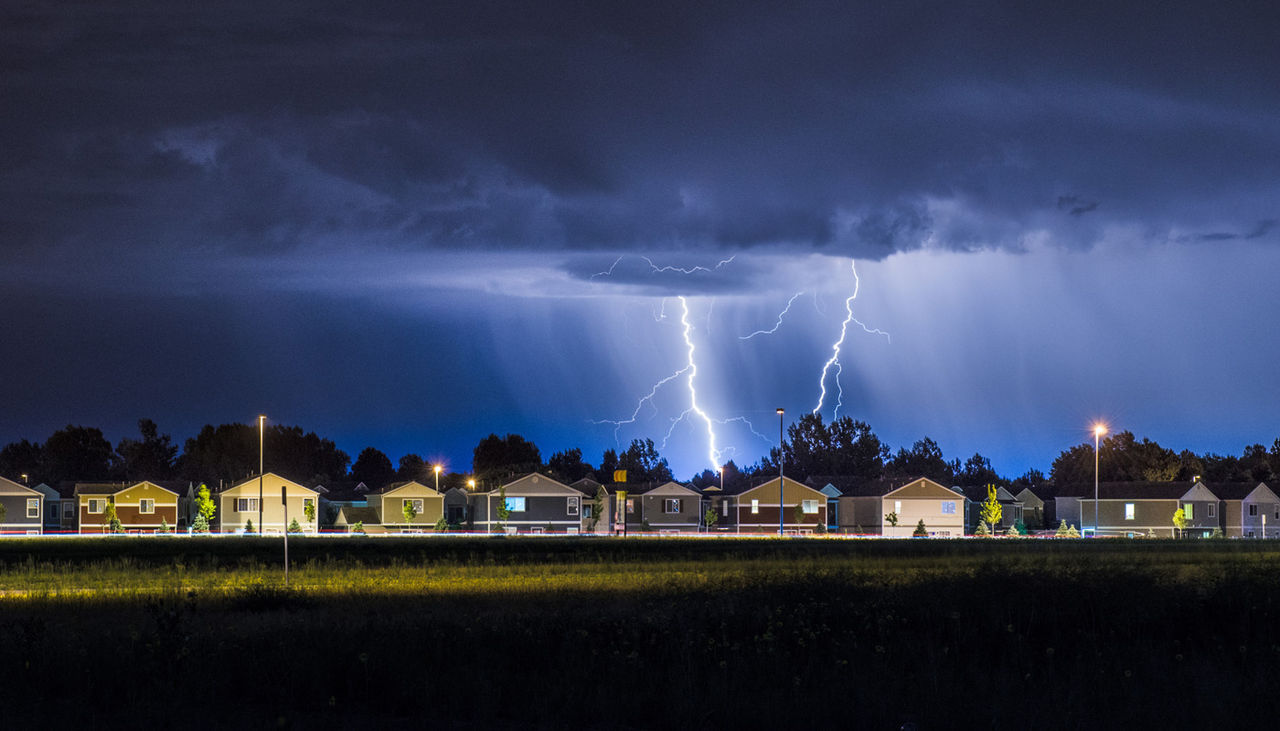To ensure you receive the best service possible,
please enter your zip code below:

expect something more
Make sure your insurance is a good fit for you by reviewing your coverage with your local AAA Insurance agent—no matter what company you’re with.
From record-breaking heat waves to powerful storms and wildfires, extreme weather is becoming part of our everyday lives across the country. In 2024, there were 27 weather events with losses exceeding $1 billion each, according to the National Centers for Environmental Information. We’ve seen homes swept away by floodwaters, collapsing under the weight of snow and ice, and flattened by tornadoes. Now more than ever, homeowners are looking for ways to protect their homes (a significant financial asset) from extreme weather incidents.
While no home can ever be completely weatherproof, there are building materials and design choices that can put homeowners in a better position when the next storm comes. Creating a weather-resistant home isn’t just about surviving the next big event—it’s about helping to reduce damage and keep your family safe no matter what Mother Nature sends your way.

A weather-resistant home is designed and built to withstand various extreme weather conditions, such as hurricanes, tornadoes, floods and high winds. The goal is to minimize damage and ensure the safety of people in the home during these events. This involves using specific materials, architectural designs and construction techniques to enhance resilience during an extreme weather event.
Extreme weather may not be the only danger to a home related to its location and environment. Wildfire events are also on the rise, and there are steps you can take to help protect your home from them as well.
Read MoreWhen designing a home from the foundation up, you’ll have the ability to add features that will lessen the risk of the home sustaining damage during extreme weather. You don’t need to build a home that can withstand damage from all weather, just the weather that is typical in your area of the country. Some areas to consider:
Building a weather-resistant home can be significantly more expensive than building a standard home. Prefab and modular weather-resistant homes are a less-expensive alternative to a custom-designed weather-resistant home, often costing in the range of $100 to $200 per square foot. Factors such as size, floorplan and building materials can increase the cost. Other costs, such as delivery and installation fees, should also be taken into consideration.

It’s not always financially or logistically feasible to build a new home to protect yourself from weather emergencies. However, there are things you can do to upgrade your current home to make it more weather-resistant. The average cost to repair a home after a storm is $3,000-$7,000, according to Insurance Claim Recovery Support, but excessive damage can certainly cost more.
A yearly home energy audit can help you find areas where your home could use some upkeep and improvements. Check the insulation as well as structural elements like beams, joists and trusses. Seal drafty windows and doors. Remove vegetation from around your house and check for dead limbs on large trees.
If you are looking to make improvements on your home, these are some key areas you can focus on:

In addition to making your home safer to live in, you might be able to lower your home insurance premiums by upgrading your home. Replacing your roof can reduce the risk of water and structural damage, and it often results in a lower premium. Replacing single-pane windows with impact-resistant glass and storm shutters can also reduce your premium. Check with your insurance agent about home improvements you are considering.
You can’t always predict when the next storm is coming. But every home improvement, from reinforced roofs to impact-resistant windows, adds another layer of protection between you and the forces of nature. Whether you’re starting fresh with new construction or making upgrades to an existing property, investing in weather-resistant features can save you thousands of dollars, preserve your home’s value and—most importantly—keep you and your loved ones safe.
A weather-resistant home is designed and built to withstand extreme weather conditions like hurricanes, tornadoes, floods and high winds. The goal is to minimize damage and ensure family safety through specific materials, architectural designs and construction techniques.
Extreme weather is increasingly common, with 27 weather events causing over $1 billion in losses each in 2024. Homeowners are seeking ways to protect their significant financial investment from weather-related damage.
Key features include angled metal roofs for snow-prone areas, hip roofs for wind resistance, reinforced foundations with steel rebar, impact-resistant windows, steel-reinforced concrete walls, fire-resistant siding and storm-resistant safe rooms for tornado protection.
Building a weather-resistant home is significantly more expensive than standard construction. Prefab and modular weather-resistant homes are a little less pricey, costing $100-$200 per square foot, with additional expenses for delivery and installation.
Yes, you can retrofit your current home through upgrades like improving site grading for proper drainage, installing hurricane ties for roof reinforcement, replacing windows with impact-resistant glass, adding storm shutters and upgrading to weather-resistant electrical outlets.
Weather-resistant improvements can lower home insurance premiums and prevent costly storm damage. The average storm repair costs $3,000-$7,000, making prevention a smart investment that also preserves your home's value.
Begin with a yearly home energy audit to identify areas needing improvement. Check insulation and structural elements and seal drafty areas. Remove vegetation near your home and consult with your insurance agent about potential premium reductions from planned upgrades.
expect something more
Make sure your insurance is a good fit for you by reviewing your coverage with your local AAA Insurance agent—no matter what company you’re with.
National Centers for Environmental Information
How Much Do Hurricane-Proof Prefab Homes Cost?
Financial Recovery After a Tornado: Understanding Repair Costs
This information is being provided for general informational purposes only. The Auto Club Group does not assume any liability in connection with providing this information.